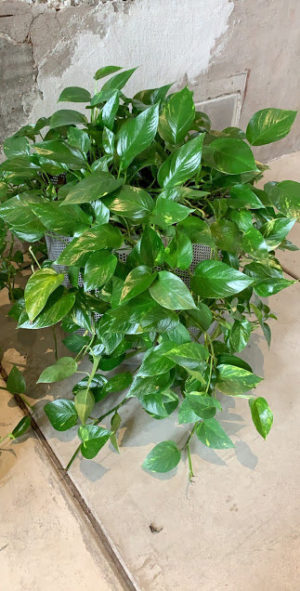What Is Propagation?
Propagation is taking part of a plant, like a stem or leaf with a node, and growing a plant from it. There’s a variety of ways you can do this. You can use water propagation, soil propagation, or air layering. Propagation comes in handy in several situations.
When a plant has grown too large and needs to be pruned, the pruned leaves or stems can be used to propagate new baby plants! These little plants make great gifts for housewarming parties, birthdays, holidays, and more.
When you have a sick plant that’s a lost cause, you can save it by propagating any remaining healthy leaves or stems! When a piece of your plant has broken off, which is common with plants such as Succulents and Wandering Jew, you can stick it back in the pot with the mother plant and let it root, to propagate.
You can also take any stems or leaves you choose to propagate and easily teach your children how to grow plants with water propagation. My son loves having ‘baby plants’ in his room and watching them grow. This also helps when accidents happen because it wasn’t a plant you had to invest in, nor was it in soil.
Water propagation
Water propagation is my preferred method of propagation. It’s quick, easy, and mess-free, and it allows for some fun creativity!
how to water propagate
If you have a trailing or vining plant, there are root nodes below each leaf. These root nodes are where new roots will grow. Cut just below each leaf node.
If you have a succulent, the roots will come from where the leaf is attached to the stem. Carefully twist & pull the leaf at the base of the plant, where it attaches to the stem. (Most of the time, these leaves will pull off the plant with no issue).
If you have a foliated plant, the roots will also come from where the leaf was attached to the stem. There are also foliated plants that grow separate stems/stalks of plants in groupings besides the larger ‘mother’ plant. Try to start with a cutting or stalks at least 3 inches long with several healthy leaves on them.
Make sure you get a clean and smooth cut. If you are propagating succulents, let them become callous before placing them in water.
Place the new leaf or cutting in lukewarm water and wait for the roots to grow!
how long it takes
Waiting for roots to grow from a propagated plant can take anywhere from one week to a couple of months. The key is to focus on how much root growth there is rather than how long it’s taking. I also like to use glass containers when water propagating, so I can easily see the root development. Watch for at least 2-3 inches of roots before repotting into soil.
Transferring to Soil
Leaving a plant in water after propagation vs. replanting it into soil is a personal preference. However, it’s important to know that most plants are natively grown in soil. If they’re in the water for an extended amount of time, their lifespan will most likely be shorter. The lifespan is usually shorter because the water lacks the nutrients that the soil would hold. But there is a way to improve the nutrients your plant receives if you intend for it to remain in water.
Hydroponic Gardening is a way of growing plants without soil and uses mineral nutrient solutions in water. This is adding the appropriate nutrients (macronutrients and micronutrients) to the water, to ensure your plants get the nutrients they need. You can purchase the pre-mixed formula or make your own mixture of hydroponic nutrients. I’m just beginning my journey with Hydroponic Gardening but look forward to sharing my experiences with you!
So far, I’ve had great success with water propagation. I have several plants still in water, such as the Golden Pothos and Sansevieria.

















Join the conversation!